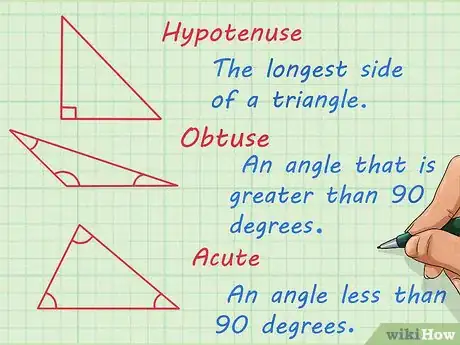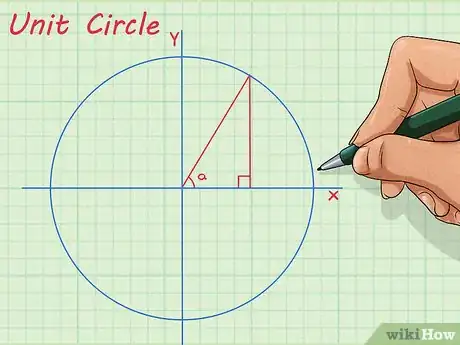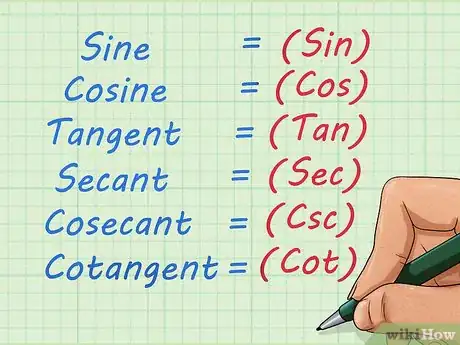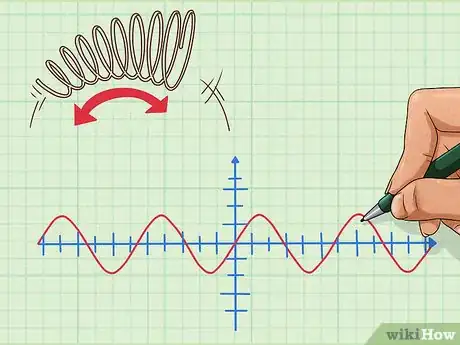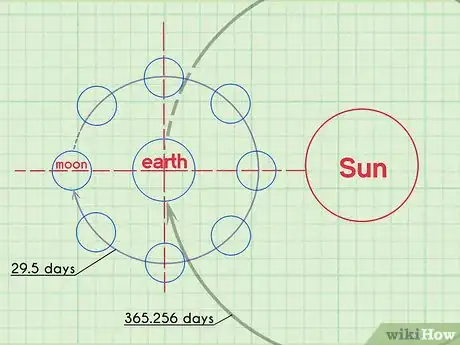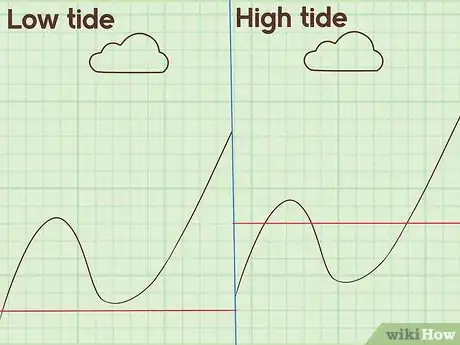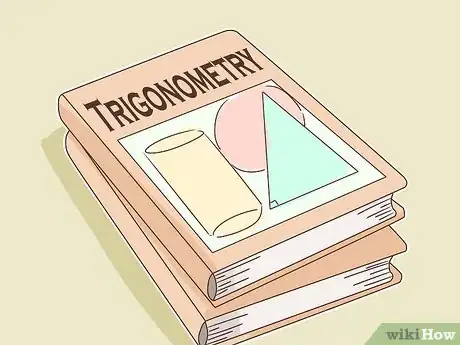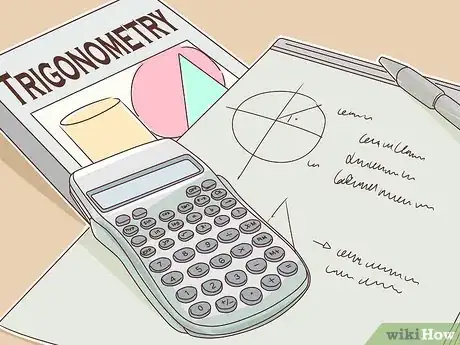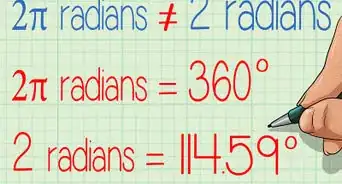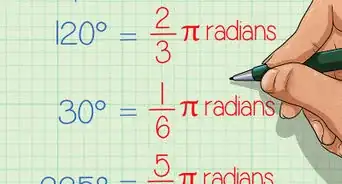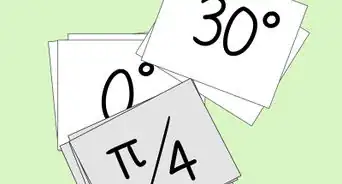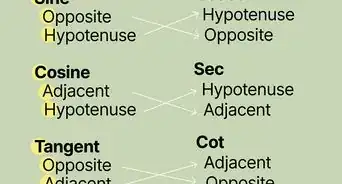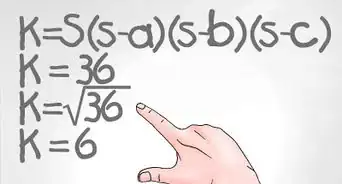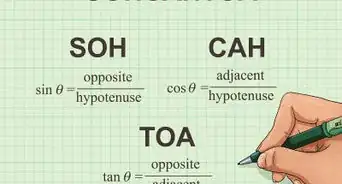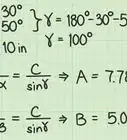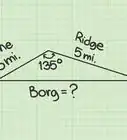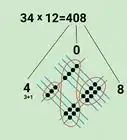This article was co-authored by wikiHow Staff. Our trained team of editors and researchers validate articles for accuracy and comprehensiveness. wikiHow's Content Management Team carefully monitors the work from our editorial staff to ensure that each article is backed by trusted research and meets our high quality standards.
There are 7 references cited in this article, which can be found at the bottom of the page.
wikiHow marks an article as reader-approved once it receives enough positive feedback. In this case, several readers have written to tell us that this article was helpful to them, earning it our reader-approved status.
This article has been viewed 519,622 times.
Learn more...
Trigonometry is the branch of mathematics that studies triangles and cycles. Trigonometric functions are used to describe properties of any angle, relationships in any triangle, and the graphs of any recurring cycle. Learning trigonometry will help you understand visualize and graph these relationships and cycles. If you combine studying on your own with staying focused in class, you’ll grasp the basic trigonometric concepts and likely start noticing cycles in the world around you.
Steps
Focusing on Major Trigonometric Ideas
-
1Define the parts of a triangle. At its core, trigonometry is the study of relationships present in triangles. A triangle has three sides and three angles. By definition, the sum of angles for any triangle is 180 degrees. You should familiarize yourself with triangles and triangle terminology to succeed in trigonometry. Some common triangle terms are:[1]
- Hypotenuse ― The longest side of a right triangle.
- Obtuse ― An angle that is greater than 90 degrees.
- Acute ― An angle less than 90 degrees.
-
2Learn to make unit circle. A unit circle allows you to scale any triangle so that the hypotenuse is equal to one. This is helpful because it relates trigonometric functions, like sine and cosine to percents. Once you understand the unit circle, you can use trigonometric values for a given angle to answer questions about triangles with those angles.[2]
- Example 1: The sine of 30 degrees is 0.50. This means that the side opposite a 30 degree angle is exactly one half the length of the hypotenuse.
- Example 2: This relationship could be used to find the length of the hypotenuse in a triangle that has a 30 degree angle with the side opposite that angle measuring 7 inches. The hypotenuse would be equal to 14 inches.
Advertisement -
3Know the trigonometric functions. There are six functions that are central to understanding trigonometry. Together, they define the relationships within a triangle, and allow you to understand the unique properties of any triangle. These six functions are:[3]
- Sine (Sin)
- Cosine (Cos)
- Tangent (Tan)
- Secant (Sec)
- Cosecant (Csc)
- Cotangent (Cot)
-
4Conceptualize relationships. One of the most important things to understand about trigonometry is that all of the functions are interrelated. While values for Sine, Cosine, Tangent, etc. all have their own uses, they are most useful because of the relationships that exist between them. The unit circle scales these relationships down so that they are easily understood. Once you understand the unit circle, you can use the relationships it describes to model other problems.[4]
Understanding the Applications of Trigonometry
-
1Understand basic uses of trigonometry in academia. Aside from studying trigonometry just for the love of trigonometry, mathematicians and scientists do apply these concepts. Trigonometry can be used to find the values for angles or line segments. You can also describe the any cyclical behaviors by graphing them as trigonometric functions.[5]
- For example, the motion of a spring bouncing back and forth could be described by graphing it as a sine wave.
-
2Think about cycles in nature. Sometimes, people struggle to grasp abstract concepts in mathematics or science. If you realize that those concepts are present in the world around you, they often take on a new light. Look for things in your life that occur in cycles and try to relate them to trigonometry.[6]
- The moon has a predictable cycle that is roughly 29.5 days long.
-
3Visualize how natural cycles could be studied. Once you realize that nature is full of cycles, start thinking about exactly how you might study those cycles. Think of what a graph of such cycles would look like. From the graph, you could formulate an equation to describe the phenomenon you observed. This will give trigonometric functions meaning to help you understand their uses.[7]
- Think about measuring the tide on a given beach. During high tide it would be at some height, and then recede until it reaches low tide. From low tide, the water would move up the beach until it again reached high tide. This cycle would continue endlessly, and could be graphed as a trigonometric function, such as a cosine wave.
Studying Ahead of Time
-
1Read the chapter. Trigonometric concepts are often hard for some people to grasp the first time around. If you read the chapter before going over it in a classroom, you will be more familiar with the material. The more times you see the material, the more connections you will make as to how different concepts in trigonometry are related.
- This will also allow you to identify any concepts that you struggle with before class.
-
2Keep a notebook. Skimming through the book is better than nothing, but it isn’t the kind of in depth reading that will help you learn trigonometry. Keep detailed notes on the chapter you are reading. Remember that trigonometry is cumulative and the concepts build on each other, so having your notes from previous chapters can help you understand your current chapter.
- Also write down any questions that you want to ask the instructor.
-
3Work problems from the book. Some people visualize trigonometry well, but you also have to carry out the problems. To make sure that you really do understand the material, try working some problems before class. This way, if you have trouble, you’ll know exactly what you need help with in class.[8]
- Most books have the answers to some problems in the back. This allows you to check your work.
-
4Bring your materials to class. Bringing your notes and practice problems to class will give you a point of reference. This will refresh the things you understand, and remind you of any concepts you may need explained further. Be sure to clarify any questions that you listed during your reading.
Taking Notes in Class
-
1Write in the same notebook. Trigonometric concepts are all related. It is best practice to keep all of your notes in one place so that you can refer back to earlier notes. Designate a specific notebook or binder to your trigonometry studies.
- You can also keep practice problems in this book.
-
2Make trigonometry your priority in class. Avoid using your class time to socialize or catch up on homework for another class. When you are in trigonometry class, you should be zeroed in on the lecture and practice problems. Write down any notes that the instructor puts on the board or otherwise indicates as important.
-
3Remain engaged in class. Volunteer to solve problems at the board or share your answers to a practice problem. Ask questions if you don’t understand something. Keep communication as open and fluid as your instructor will allow. This will facilitate you learning and enjoying trigonometry.
- If your instructor prefers to lecture mostly uninterrupted, you can save your questions for after class. Remember it is the instructor’s job to help you learn trigonometry, so don’t be shy.
-
4Follow up with more practice problems. Complete any homework assigned. Homework problems are good indicators of test questions. Make sure that you understand each problem. If no homework is assigned, work problems from your book that reflect the concepts covered in the most recent lecture.[9]
Community Q&A
-
QuestionHow can I solve the trigonometric proofs?
 Community AnswerTrigonometric proofs are quite difficult but you can crack it. Try to solve any one side first: left or right. Then, use trigonometric identities according to the opposing side.
Community AnswerTrigonometric proofs are quite difficult but you can crack it. Try to solve any one side first: left or right. Then, use trigonometric identities according to the opposing side. -
QuestionHow can I get really good at trigonometry?
 Community AnswerPractice everyday, even if it means doing the same assignment twice. You can also buy books and exercise books for extra practice. Lastly, you can always consider getting a tutor to help you understand certain topics.
Community AnswerPractice everyday, even if it means doing the same assignment twice. You can also buy books and exercise books for extra practice. Lastly, you can always consider getting a tutor to help you understand certain topics. -
QuestionHow do I remember trigonometric identities as fast as possible?
 Community AnswerIt's quite difficult to remember trigonometric identities but you can easily learn it by practicing the formulas by writing them out again and again on scrap paper. Write both LHS and RHS of formulas again and again, as this will help you to properly remember.
Community AnswerIt's quite difficult to remember trigonometric identities but you can easily learn it by practicing the formulas by writing them out again and again on scrap paper. Write both LHS and RHS of formulas again and again, as this will help you to properly remember.
Warnings
- Cramming for trigonometry tests rarely works.⧼thumbs_response⧽
- You will not learn trigonometry by forced memorization. You have to understand the concepts involved.⧼thumbs_response⧽
References
- ↑ https://www2.clarku.edu/faculty/djoyce/trig/formulas.html
- ↑ http://www.mathsisfun.com/algebra/trigonometry.html
- ↑ https://www.cuemath.com/trigonometry/trigonometric-functions/
- ↑ http://www.mathsisfun.com/algebra/trigonometry.html
- ↑ https://www.cuemath.com/trigonometry/applications-of-trigonometry/
- ↑ https://betterexplained.com/articles/intuitive-trigonometry/
- ↑ https://betterexplained.com/articles/intuitive-trigonometry/
- ↑ https://www.govst.edu/uploadedFiles/Academics/Colleges_and_Programs/CAS/Trigonometry_Short_Course_Tutorial_Lauren_Johnson.pdf
- ↑ https://www.khanacademy.org/math/trigonometry
About This Article
Trigonometry is a branch of math that studies the sides and angles of triangles and units of circles. If you want to learn trigonometry, you’ll need to learn to define the parts of a triangle. A triangle can be obtuse, meaning it has an angle greater than 90 degrees, or acute, meaning it has an angle less than 90 degrees. A triangle with a 90-degree angle is called a right triangle. You’ll also want to learn to make a unit circle. If you divide a circle into 4 quadrants, you can use an x and y-axis to help you figure out the angle of a given triangle. Knowing the different functions in trigonometry will help you figure out relationships within angles and triangles, so you’ll want to study up on the 6 main functions, which are Sine, Cosine, Tangent, Secant, Cosecant, and Cotangent. To learn how to prepare for your trig class, read on!
